CRJ 18:1 Out now!
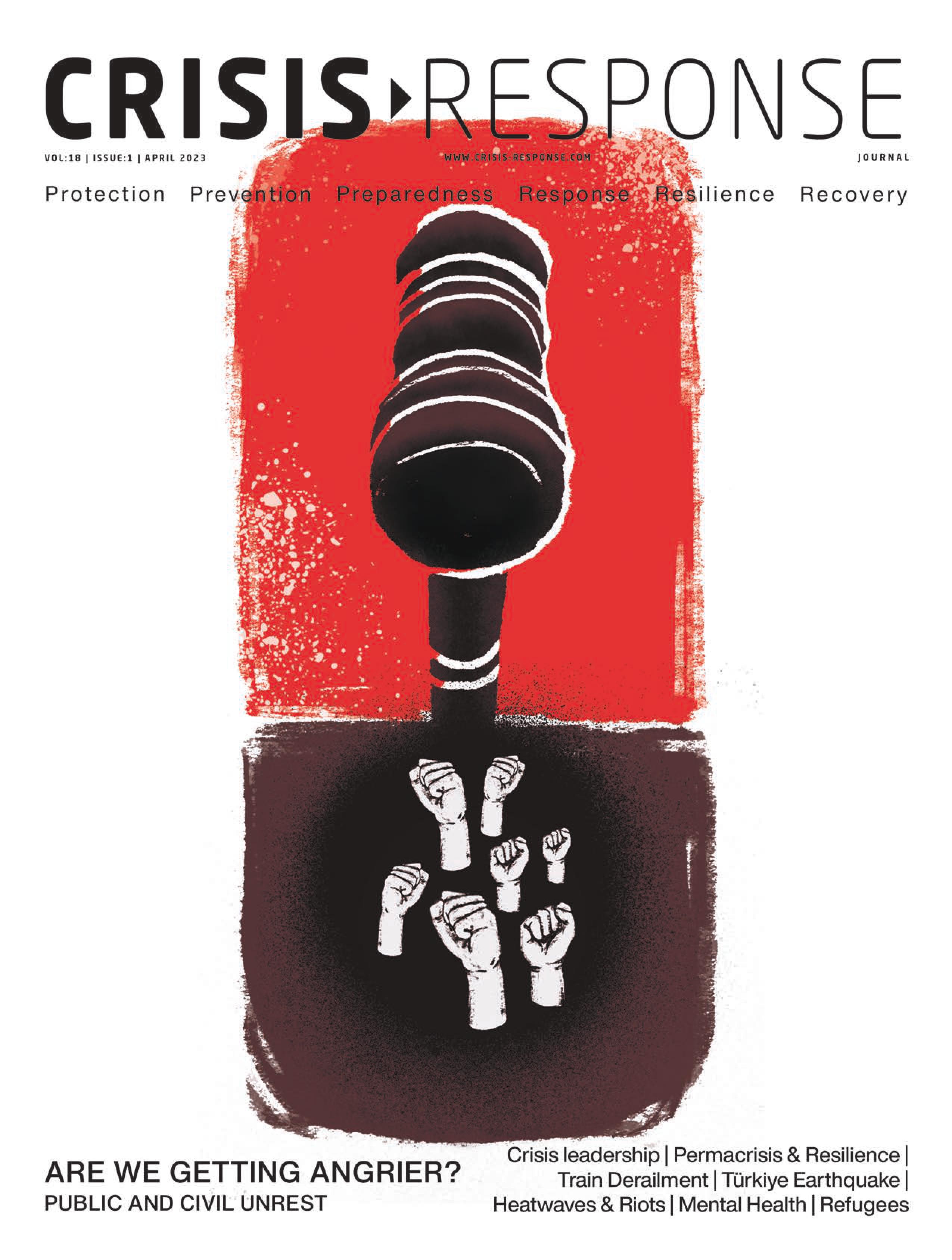 The April edition of the CRJ is now available online. Hard copies will be mailed out this week and all subscribers can log in and read the digital edition through the CRJ website.
The April edition of the CRJ is now available online. Hard copies will be mailed out this week and all subscribers can log in and read the digital edition through the CRJ website.
This edition, we explore and analyse civil unrest around the world, with a look at crisis leadership, permacrisis and resilience, first responders and mental health, climate change and unrest, and multiple hazards around the world.
What makes protests turn into riots? Matt Minshall explores collective action in the context of the recent protests in France and around the world. Jennifer Hesterman takes a look at the leading cause of death for children in the US: gun violence. Elton Cunha examines the prevalence of ideological extremism in South America and how it’s fanning the flames of political instability. Luavut Zahid interviews Dr Cesar Cunha Campos about social and political unrest in the region.
Our cover story also includes a feature on killer heatwaves and how they contribute to civil disruptions. Evie Lunn takes a look at how extreme weather conditions and food insecurity in Europe have influenced riots and what the future may hold.
Lubna Jerar Naqvi explores the killer heatwaves in South Asia and whether the region is prepared for this year’s predicted forecast. In the same vein, Robert Field and Albert Weale take a look at the UK’s upcoming drought and try to answer the question of whether this was all avoidable.
Anita Punwani takes a closer look at how the UN’s Sustainable Development Goals can be achieved despite the global crises prevalent today. Matthew Porcelli takes a look at crisis planning for those on the frontlines and steps that organisations can take to return to normality. Keeping crises in mind, Amanda Coleman explores the challenge of managing a long-running turbulent scenario in her excellent book Crisis Communication Strategies.
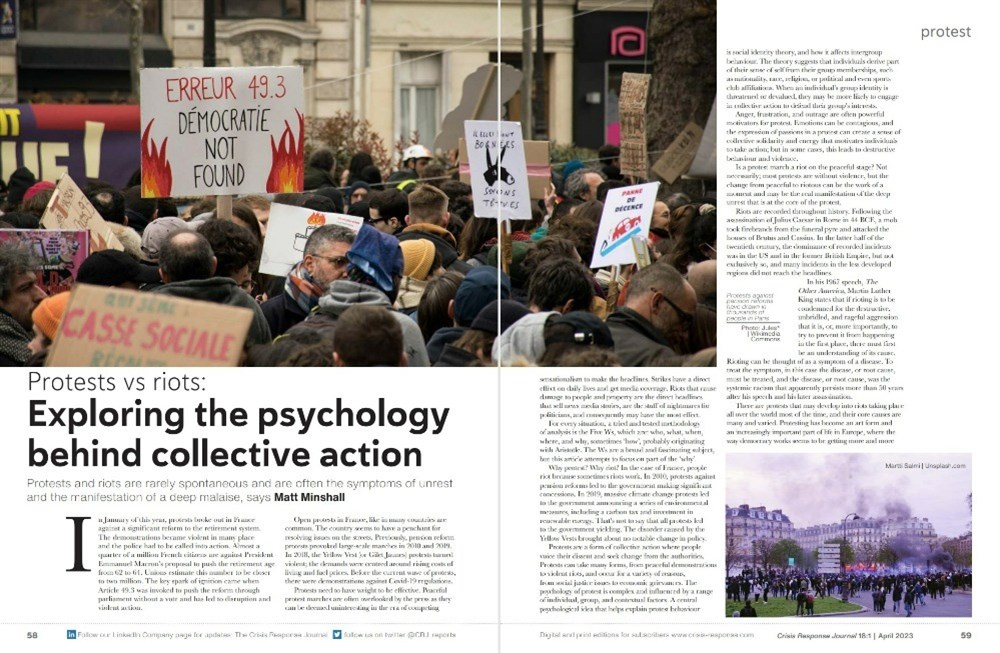
Matt Minshall examines unrest with a wide lens.
Mostafa Sayyidi and Michael J Provitera look at future global challenges: "Business leaders across the world can apply past lessons learned and prepare for the future. These lessons can help leaders prepare for many crises that may occur much sooner than expected."
Turning to resilience: Douglas Stockam examines relief funds and how they can help boost ESG initiatives. Meanwhile, Robert Hall explains that the concept of resilience needs a more human touch, ie, personal resilience is key for practitioners to effectively do their jobs.
In "Permacrisis: Time to use the difficulty" Andy Blackwell advises organisations on how to stay strong in the face of long-term, persistent instability.
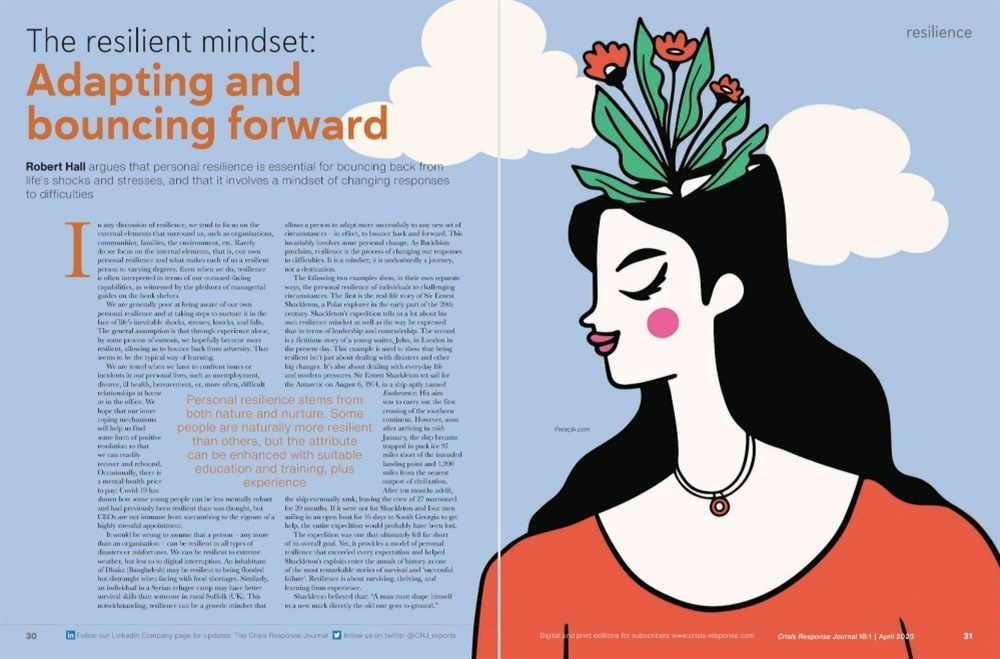
Robert Hall explores personal resilience
"The role we perform as emergency planners is a very responsible one and one that affects people’s lives, potentially significantly," writes Arthur Rabjohn as he reflects on his career in the resilience sector.
HatiPlong’s team of psychologists takes on the question of mental health for first responders. Raphael Barishansky takes a look at public health emergency preparedness in the US and its development since 9/11.
Onto Hazards: André Francisco Pugas takes us back to the 2008 Santa Catarina floods in Brazil to explain the gaps in preparedness as climate-related events intensify. Elton Cunha speaks with Dr Osvaldo Moraes about disaster science in Brazil.
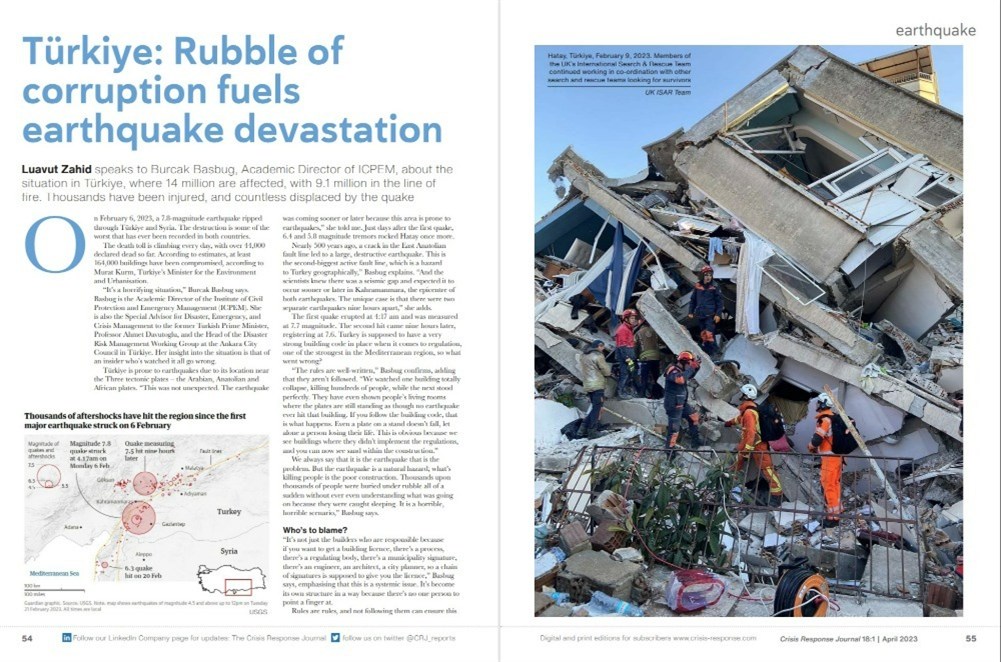
Bill Peterson dissects the Ohio train derailment incident in the US, while our Publishing Editor Luavut Zahid interviews Burcak Basbug to explore the aftermath of the February 2023 earthquake in Türkiye.
Emily Hough reviews Order out of Chaos by Scott Walker, an insightful book that offers tools that work for all situations, but from the perspective of a hostage negotiator.
Amanda Coleman tackles the subject of communication as she reviews her book: "There are many challenges that exist, from changes in personnel that will happen as the crisis runs into years to the residual damage to an organisation’s reputation if it is seen as 'crisis-hit'. Having the right resources in place will mean the difference between continuing to manage the situation and letting it run away from you."
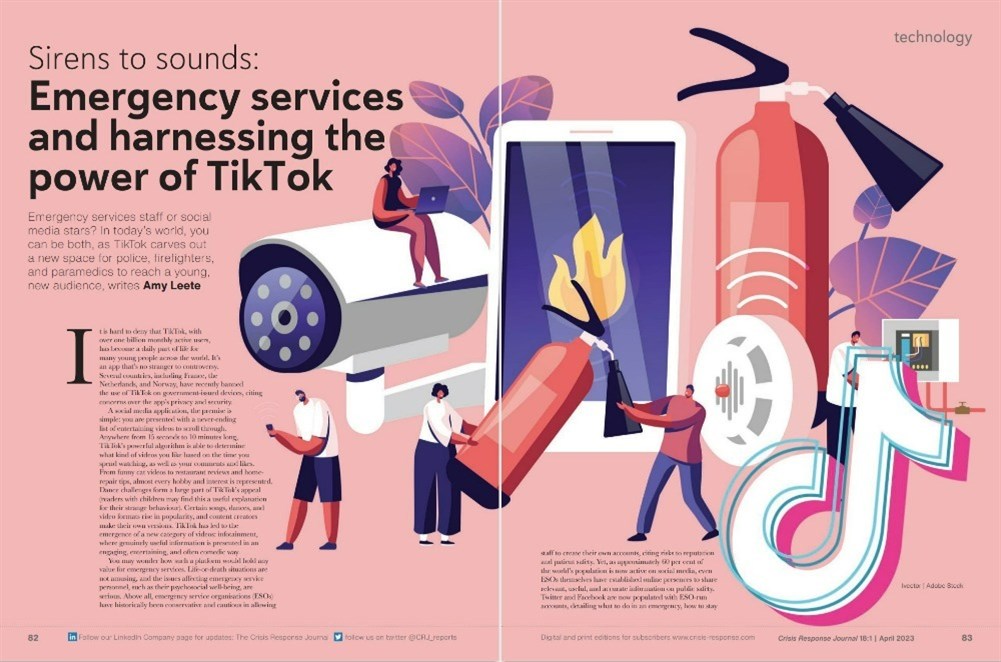
In her last article of the series, Beverley Griffiths emphasises the importance of having a living ethical framework for emergency management.
Lina Kolesnikova tackles the subject of refugees and migrants in Europe and explores how Schengen states are grappling with the issue. On the other hand, Shreyas Jayakumar highlights the work of the Azadi Project, which aims to help refugee women access employment and mental health services.
On the technology front: Gabriel Carrier takes a look at virtual assistance in disasters by examining the highs and lows of the digital revolution in this sector in Canada.
TikTok is fast becoming one of the most useful, and controversial, tools of our time. Amy Leete writes about how emergency services staff have turned to the platform as a means of education and communication.
Lissane Siebel-Achenbach and Harri Ruoslahti explore the work of their team for the INEGMA-E2 project. Alexandra Olson sheds light on the Engage project and the efforts made by the Trondheim Red Cross to fortify neighbourhood communities against swift clay landslides.
The Crisis Response Journal is available to subscribers only – we have a range of subscription rates to suit all needs. Click here for more details or contact us at hello@crisis-response.com – we would love to hear from you!